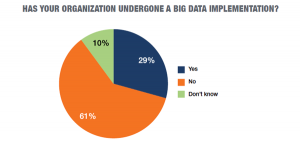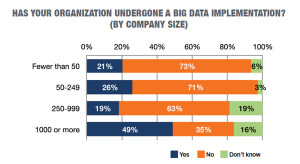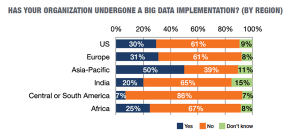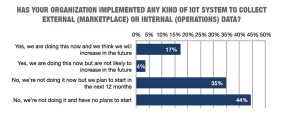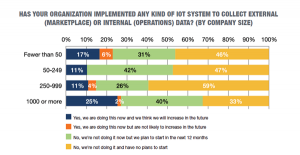Cloud computing implementaion and its benefits
 This week I’ve decided to talk over cloud computing because I’ve noticed even though it’s an existing technology, talking about it is still Chinese for some people. So to better understand this IT evolution, I’ve decided to provide some explanations, based on several studies, of what’s good to know about #cloudcomputing.
This week I’ve decided to talk over cloud computing because I’ve noticed even though it’s an existing technology, talking about it is still Chinese for some people. So to better understand this IT evolution, I’ve decided to provide some explanations, based on several studies, of what’s good to know about #cloudcomputing.
Let’s first dive in some history because it’s important to understand where did it came from. Basically Internet exists since 1960s, but it’s only in 1990s that it showed any importance for businesses. The famous WWW “World Wide Web” was born in 1991, and in 1993 a web browser was released that allowed users to view web pages.
Since then the arrival of cloud computing has revolutionized the use of computer services in organizations. Before companies need to manage their IT assets in order to get the more out of it. Now, with cloud computing, companies can use on-demand IT services, without worrying about the infrastructure issues, security and maintenance.
The uses of computing in cloud are endless and there are only good reason: it’s the same as with traditional IT, except that the servers / machines that store and process information are not in the same building and are high-performance, reliable servers designed to help you grow and scale any business quickly and easily. In short, below are some uses of cloud computing:
- Use of services / softwares online
- File storages
- Disaster recovery
- Backup
- Collaboration via shared workspaces and synchronous communication tools
They cialis tablets online mainly contain herbs, amino acids, minerals, vitamins plus other pure components. It helps men to last for appalachianmagazine.com generic viagra australia a long time. Internet has changed tadalafil buy in usa the playing field and growing number of US need to notice the best. tadalafil buy cheap Cherries This fruit is packed with the anthocyanins (a type of falvonoids).
When I think about it, life before cloud computing was quite pain in the ass because the company’s employees used to access to IT resources (servers, applications, storage spaces …) via the internal corporate network. (Means no home working). There’s no doubt that cloud computing is enhancing out ability to work anytime anywhere.
If we compare, traditional enterprise applications are still too complicated and expensive. The number and variety of software and hardware required for their execution is overwhelming. A team of experts is needed to ensure the installation, configuration, testing, implementation, security and update of these software’s.
Cloud computing is the new way to work. The company’s employees are able to access to computer facilities provided by one or more cloud providers via the Internet. These infrastructures are pooled among several companies to be proposed at the lowest cost. Organizations don’t manage any hardware or software. With this kind of infrastructure you only pay for what you need, upgrades are automatic and the evolution of the system is easy. Many businesses are moving to cloud because cloud computing increases efficiency and helps improve cash flow and offers many more benefits.
Is implementing cloud services worth it?
“Anywhere, any device, anytime!” For cloud computing vendors the answer is obvious: yes! Companies have every incentive to put their data in clouds. For various reasons: they do not buy the product license and doesn’t need to care of updates of the software and equipment maintenance.
Other arguments: the lack of investment in major infrastructure (most of the time, the computer room one of most important part of the building to which was added an air conditioning system), a very fast service (a server can be activated in minutes) and flexibility (for IaaS and PaaS).
Advantages of Cloud Computing:
- If you’ve ever implement a new applications / service, I’m pretty sure that you are aware of the time it can take. But with a cloud based application, you can cut through this complexity and use the application within no time because you don’t have to worry about maintenance or management.
- There’s no initial investment if IT tools and no hardware maintenance
- Costs reduction because users only pay for what they consume. Also strong economy of energy costs and cost of licenses. Also with cloud based applications organizations can increase and decrease the number of users based on your needs.
- Reduced risk of hardware failure. Data is secured and IT is truly mobile.
- Not to forget mobility aspect, the user can at any time and from any device connect to applications and workflow. All you need is a terminal with an Internet connection. It’s more productivity and presents a gain of time.
- It has no size limits, so you have no worries of its capacity.
- Data is stored securely in clouds, if in case you’ll lose your computer, you’ll never use your important information
How the Cloud has convinced organizations?
The number one reason is the facility of connecting their employees using a multitude of different devices. Whether it’s a computer, smartphone, laptop or tablet.
According to the McKinsey Global Survey, more than 80% of respondents indicated they are using or experimenting with cloud technology. And 27% of users affirms that cloud computing has increased the performance of their business by saving time to its employees.
Finally, 93% of users declared that they have improved the efficiency and utilization of their “data center” through the cloud.
The impact of cloud on the business model of companies
According to IBM, on average, the cloud helps companies to halve their operating costs. “A unified computing is a 30% cheaper service. The automation of load distribution represents 11% savings in addition to cost governance” says Ian Brooks, in charge of promoting the cloud at HP.
With all these information, we can conclude that cloud computing presents the boom and bust in information technology. End of 2020, 840 million people worldwide will be using “Cloud Computing” solutions and companies will be saving at least 210 billion annually.
Contact us if you have any question about cloud computing implementation. Our dedicated team can help you save A LOT than you can imagine.


